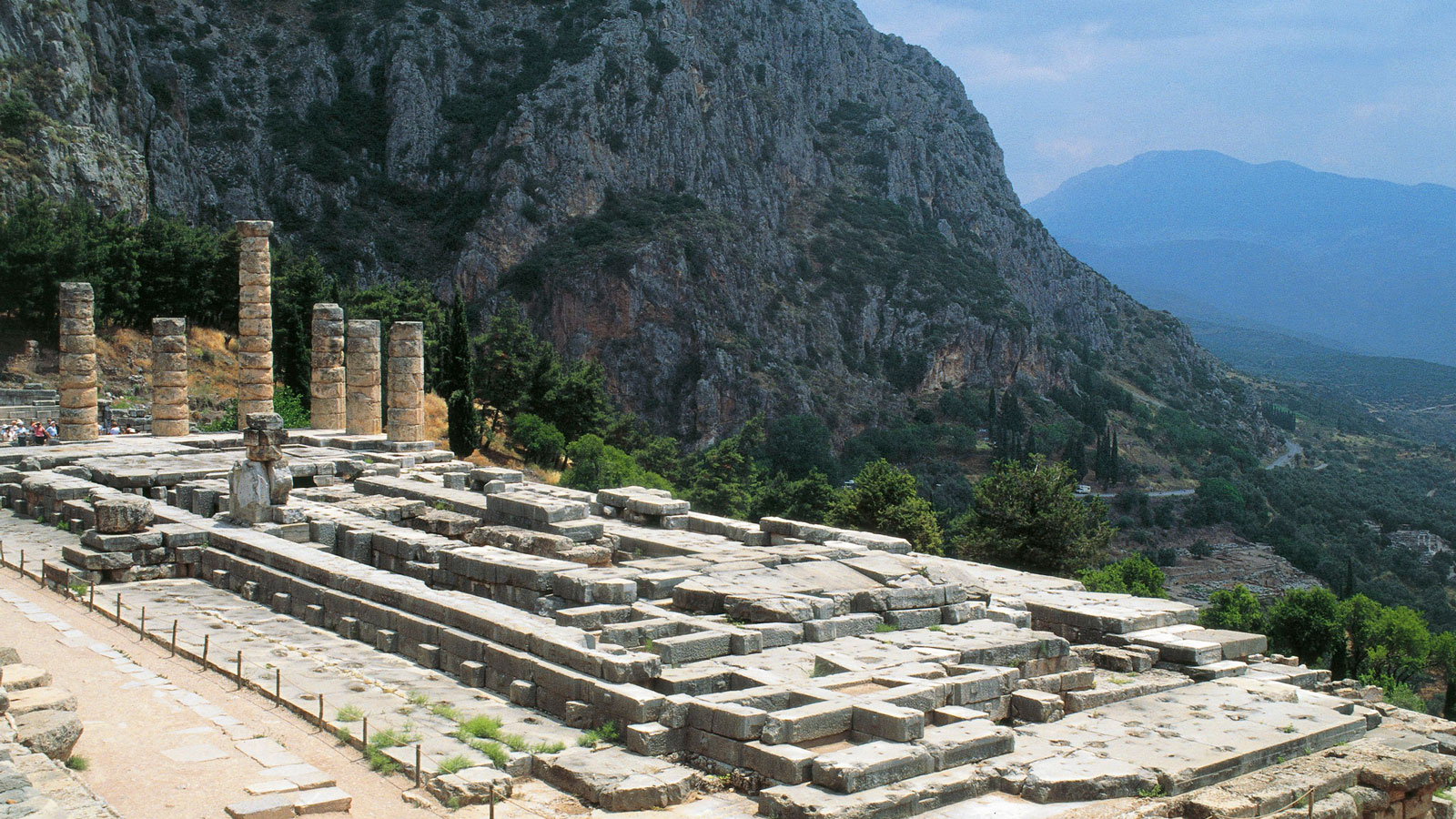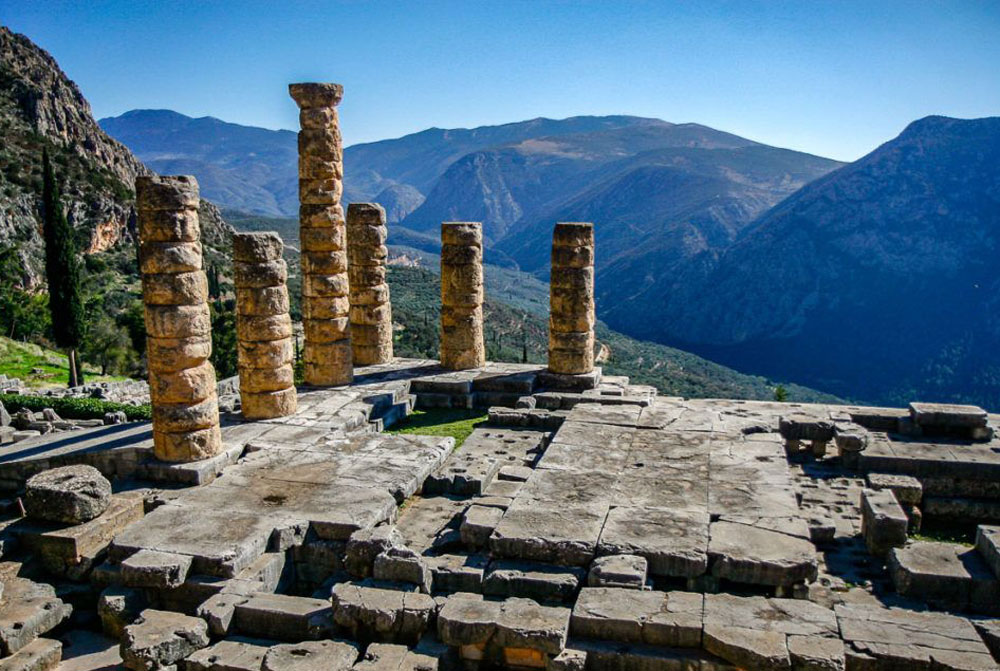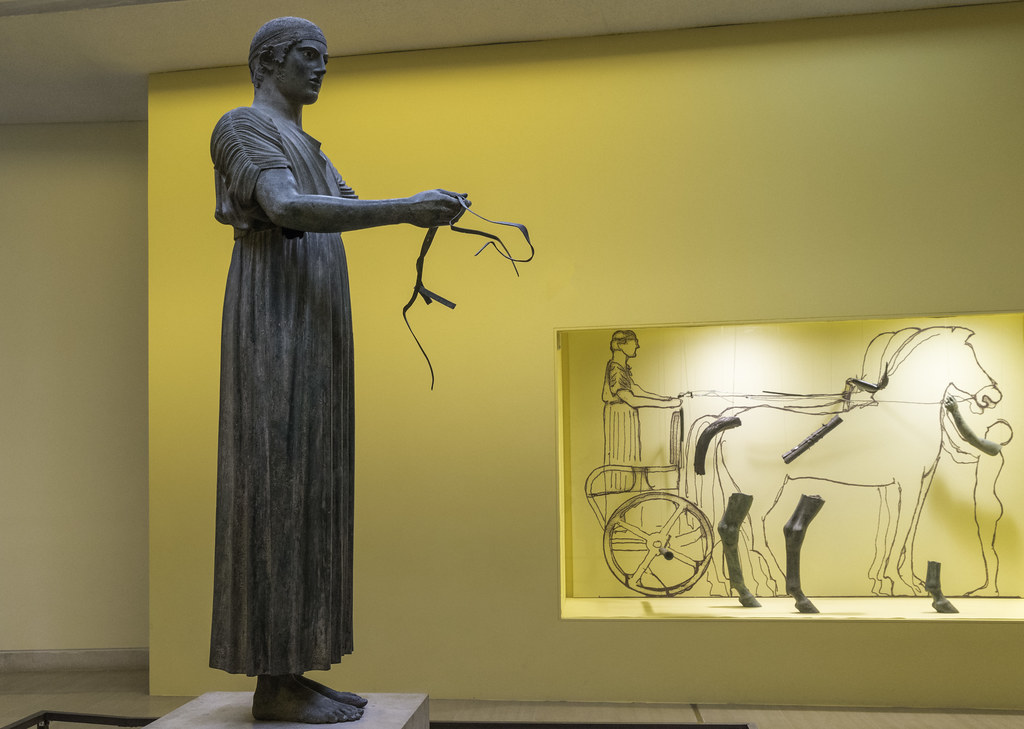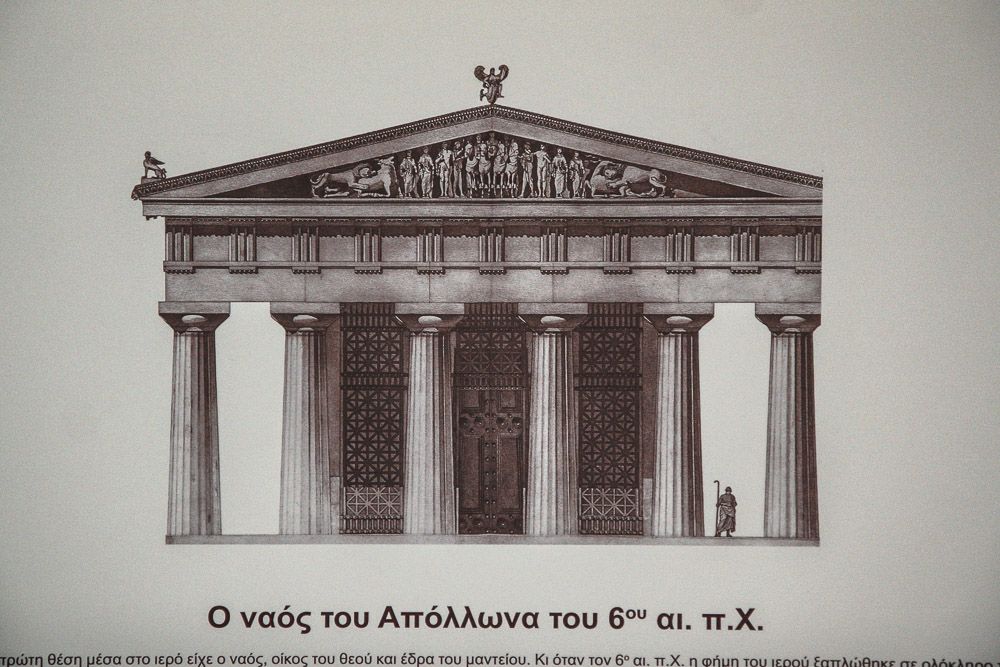Most of the time people connect Greece with its stunning beaches and island, especially that Santorini which is popular for an exquisite vacation and intricate ancient temples and various UNESCO World Heritage sites. But what really makes Greece this much renowned all over the world is ancient ruins and fabulous historic architecture. Some best examples of the architectural brilliance in Greece include the Acropolis in Athens, Temple of Apollo at Delphi and the ancient Theatre of Epidaurus.
In our previous blog we’ve already discussed The Acropolis of Athens and The Theatre of Epidaurus: For reading more visit— Interesting Facts About Acropolis & Parthenon of Athens – Greece. Momentarily we will explore about the mythical temple of Apollo which is located in Delphi.
Quick Outline of Delphi
For the Greeks, Delphi was considered the centre of the world. At Delphi, there was a major ancient Greek temple that was dedicated to the Apollo god. This temple is located on Mt. Parnassus, near the Gulf of Corinth and was home to the famous oracle of Apollo, which provided cryptical prophecy and advice to both city-states and individuals.

Delphi is listed as a UNESCO World Heritage Site. Delphi was also known as the centre of the world because of its two eagles, one eastward and the other westward in the Greek mythology, which Zeus published, and Delphi was the place they reached after surrounding the earth.
The Temple of Apollo
Delphi’s central and most significant part was Apollo’s temple, where the Pythia delivered her prophetic words in the ‘Adyton,’ which was a separate and reserved space. The Temple of Apollo is supported by a huge wall built from limestone polygonal, known as the Ischegaon. It is believed that in the sixth century BC, Earth was carried from the Parnassus Valley to create it.

The Apollo Temple at Delphi is worth a special journey. It is the core of a sacred massive site, with plenty to discover and learn around. This is where the statues and other offerings to the god were stored, and where rituals of worship, including that of divination, were performed. There are approximately 800 inscriptions on the walls of Apollo’s temple.
History of the Temple
According to the history, Apollo’s first temple at Delphi consisted of branches of laurel, the second of beeswax and feathers, and a third of bronze, while the fourth was designed by the legendary architects Trophonius and Agamedes, under the guidance Apollo. This was the temple of stone which was partially destroyed by fire in 548 BC. Its reconstruction was done with the help of both Greeks and non-Greeks and was completed by the Alcmaeonid family of Athens around 510 BC.
The Oracle of Apollo
The oracle of Apollo at Delphi was famed throughout the Greek world and even beyond. The oracle – the Pythia or priestess – would answer questions asked by visitors and want some guidance in their future actions. The popularity of the Delphi Oracle was at its peak between the 6th and 4th centuries B.C. Rulers and common people both seeking consultation with the Pythia. After getting answers, pilgrims offer their gratitude with extravagant gifts and offerings. Thus this increased demand for the oracle’s services.

The Delphi Oracle has been consulted on both private matters and state affairs. The rulers of the city-state would also look for the oracle before beginning wars or founding new colonies in Greece. Greeks claimed that the Oracle of Delphi had lived since the dawn of time and predicted correctly numerous historical events like the Argonaut expedition and the Trojan War.
Also Read: Teotihuacan: The Ancient City of Gods & Pyramids in Mexico
Know about its Architecture
The temple was destroyed by an earthquake in 373 BC. This majestic Doric temple was designed by the architects Spintharos of Corinth, Xenodoros and Agathon. It has the same configuration and about the same dimensions as its ancestor, with six columns at the end and fifteen at the sides, and both ‘Prodromos’ and ‘Opisthodomos’ at the stakes. The cella was divided into three naves by two courtyards of eight Ionic columns each.

This was a temple of the Doric peristyle, with six columns at the end and 15 at the sides. Designed in stone and coated in marbles, the artist Antenor had been beautifully decorated with sculptures. The eastern wall portrayed the epiphany of Apollo as he arrived in Delphi with his sister Artemis and his mother Leto; the cart of the gods was at the centre of the scene, surrounded by male and female figures. Only the figures of Athena, a falling queen, a male figure and two horses have survived from the western south wall which depicted the Gigantomachy.
The temple was partly rebuilt. Fragments of the pedimental statues of both the Ancient and the Classical / Hellenic Temples are seen in the Archeological Museum of Delphi.
The Significance of the Temple of Apollo
Delphi was an unofficial meeting place between separate Greek city-states and sometimes their neighbouring cities. During a time when the Athenians and the Spartans, the Siphnians, and hundreds of other Greek and Roman states have engaged in trade wars or hot wars, Delphi was peaceful ‘Panhellenic’ place where they come together to perform festivals, try and solve rivalries, and discuss deals. Officers came here to consult the Oracle and then remained behind to perform foreign relations with each other.
Summing up here, but the Temple of Apollo is as unique as the Acropolis of Parthenon in Greece. Both destinations hold ancient and architectural importance in the history of Greece. One in your lifetime everyone should visit Greece to learn and understand the history, culture and traditions of Greeks.
Also Read: Visit Crete And Be A Part Of Greece’s Ancient Culture

